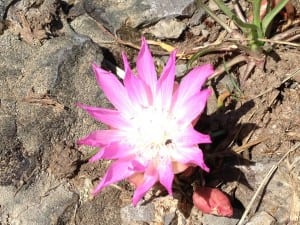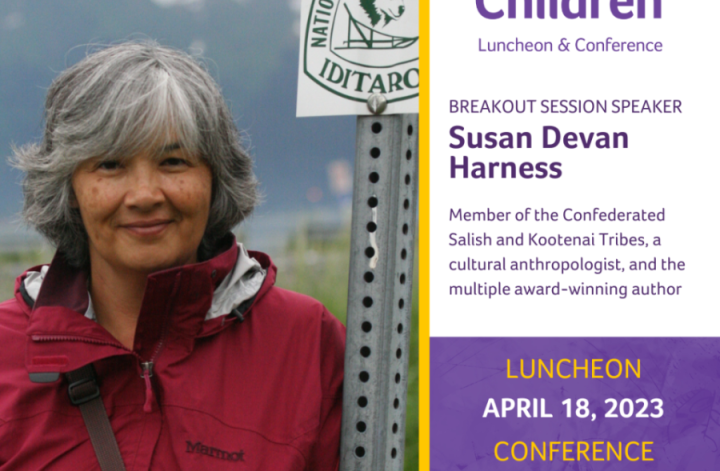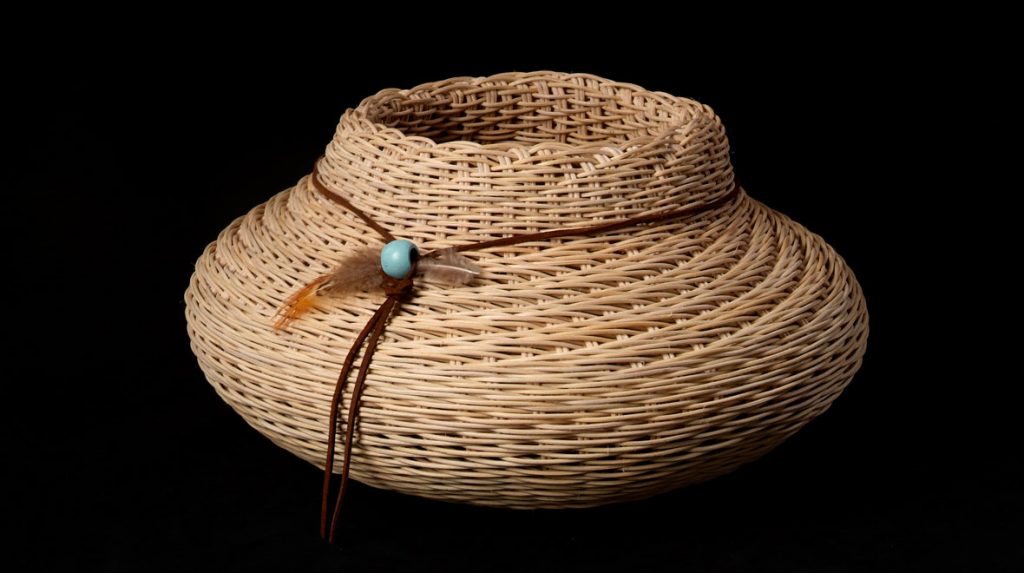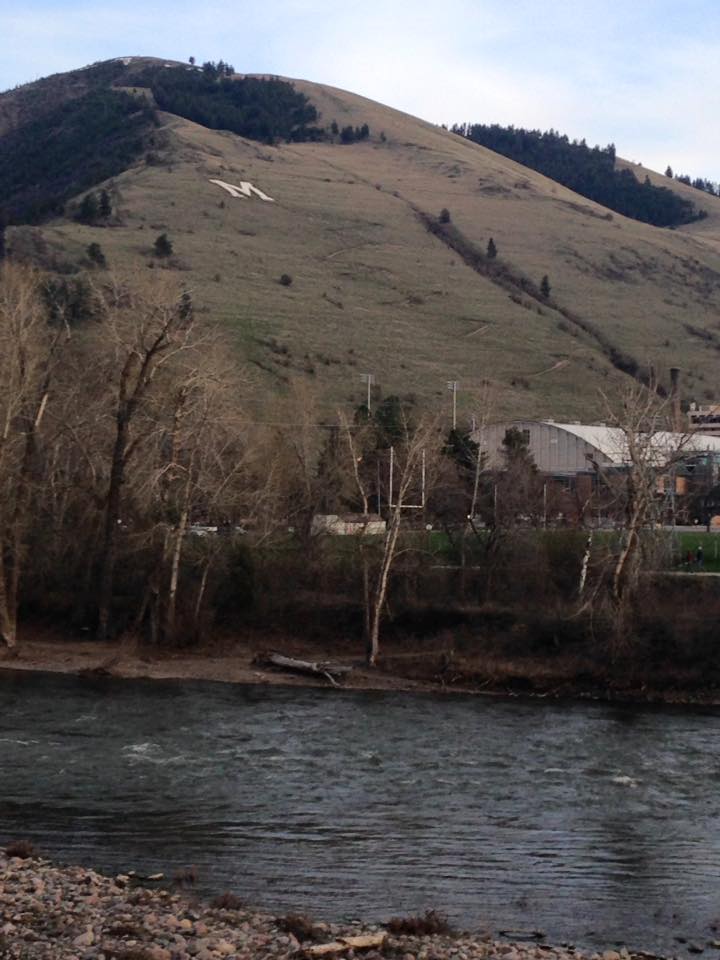
THE AMERICAN WEST is stunningly beautiful. Its images, quilted together, form a landscape that can be brought to mind with the aroma of pine that stings my nostrils, the feel of soil between my fingers, the sound of a waterfall or the taste of chokecherry jelly that Mom used to make in August. To me, everything about the West is alluring. It is where I seek to return after travels have taken me elsewhere. It is familiar; its people, its culture, and its bitterly painful history. It is this history that I, as an American Indian transracial adoptee, can’t escape.
Ever.
It is 1966 and I am standing on the lowland near the Bitterroot River, where the soil is rarely moistened by the gently moving water. I am seven and wearing a sleeveless shirt and shorts. My hair, flighty and fine, is pulled back into a dark brown ponytail.
“Here,” my adoptive father says as he moves me from place to place, his hands on my shoulders, guiding me, forcing me while my feet stumble on the rocks that are too big and rounded to rest smoothly against one another. “Sit here. Stand over there.” Always the Bitterroot Mountains laced by cottonwoods are my backdrop.
My father takes his shovel that he has brought with him and places the head into the rocky earth, near a soft pink flower. With his foot, he forces the blade in, uprooting the plant with its papery petals, lifting it from its home. He is careful to keep as much of the soil around its branched roots as he can, but little by little the soil falls away as he transfer the plant into my small hands.
“Hold this, it’s a bitterroot,” he says, stepping back as he looks into the square box at the top of the camera whose two perpendicular eyes stare at me from the front. He checks the small brown light sensor in his right hand. “Smile.” He snaps. He frowns and looks at me through the box again. “Smile,” he says, his voice now edged with irritation. He snaps again, and looks at the sensor, then looks at me. “This is a bitterroot,” he adds by way of explanation. “For the Salish, the tribe you belong to, it is sacred. It has important meaning. Now, kneel down on one knee and smile.” I do, but the rocks dig in to my skin, which barely covers the bone, and the smile I produce is fake. “Do it again, but this time hold the plant away.” “Hold the plant here.” “Hold the plant down and in front of you.” “Stand up.” Always looking into the box, always checking the light meter. The only tie he looks at me is to show his irritation of my inability to follow his simple directions. By the time we’re done, that plant doesn’t feel very sacred. I watch him place it back into the hole from which it was extracted, but the soil is now broken, scarred by its removal.
I’ve since learned the plant is sacred for its medicinal properties and high nutritional value. Its most impressive characteristic is the fact that it can withstand drought for several years during which time it doesn’t bloom. However, when the rains come, these long, delicate vibrant petals shoot up and out of the ground, producing the floral display that is unrivaled.
Oh, so many metaphors.
***
My names are Susan Devan Harness, Susan Jean Devan and Vicky Charmain Rowan. Each of them fits a space in my life, a description of who I was, who I am, and the roles I play in my various families: birth family, adopted family and the family I’ve created. The only one I no longer use, or even refer to – by choice – is Jean. This name was the whitest name I had.
As Vicky Charmain, I am named after my birth mom, Clara Victoria. My sister, Ronni Marie, is named after our father, Ronny. It is with sadness that I announce that Vicky Charmain is dying, a little bit every year. When I first returned to my reservation family, more than twenty years ago, Vicky Charmain was the name by which I was known, the name that held my place at the family table, the place that sat empty for nearly thirty years. That family had no concept of Susan Devan Harness, of who she was, or who she had become. But they did remember Vicky Charmain, the daughter who was taken by social workers in 1960 at 18 months of age. It was that daughter, Vicky Charmain, they remembered when I returned in 1993.
I’ve trekked home nearly every year for the past ten years, and I find that my original name is slowly being erased by time, replaced by the name that holds no memory to these people. And to be honest, its disappearance makes me sad. It reminds me that the metamorphosis is almost complete: the woman I was supposed to become because of my adoption replacing the child I’d been while I lived with my birth family
It is 2013, and I’m talking with my Aunt, Darlene, my birth mom’s youngest sister. We are sitting in her kitchen. She is working on creating rosaries; I am staring at the Mission Mountains outside of her back door. She’d moved away from the reservation over 40 years ago, making her home with his husband, Johnny, in Washington State. She’d moved back last year and I ask if the return has been a difficult transition for her. She thinks for a few moments, looking off into space. Then she shakes her head, a gentle movement, and answers in a soft voice, which carries just a hint of the reservation dialect, “No. Not really.” She pauses. “No. It wasn’t difficult to come home, but it is different. No one knows me as ‘Doll.’ Everyone now calls me Darlene.” Her mouth carries a wistful smile, and her gaze is shy as she gifts me this realization. “I miss people calling me Doll.”
Although I am just beginning to know Doll, I realize the importance of our commonality: our names are disappearing behind a veil of time, a memory held by family and community. And like Doll, I smile when I hear the name I was given. However, the only one who uses it is my sister, when she’s introducing me to an unfamiliar uncle or to a family friend. “This is Vicky Charmain,” she’ll say. And then she might add, “She’s my sister.” And I breathe a sigh of relief then. Vicky Charmain is not yet dead.
Names are powerful. They are symbols of the known, those things we categorize and list, place in hierarchies and remember. Names reveal ownership. We can also use them to mystify, or demystify, our world and everything in it, including ourselves.
I knew a woman who, after being molested by a family member, changed her name to Sage. Or, Artemis, a woman who’d been physically and emotionally abandoned by her family. In his 50s, my dad had changed his name from George to Jedidiah, to remove the angry memories of school girls taunting him with the nursery rhyme “Georgie Porgie.”
My sister, Ronni Marie, had been placed, at age six, into a different non-Native family. When her adoption took place, Ronni’s adoptive mother offered three names, of which she could choose one. She chose Rita, because it sounded the best of all three. “But I always thought it was strange,” Ronni said to me the other day, “that of the the three names, none of them was my birth name, Ronni Marie.”
There’s that wistful smile again.
***
To grow up in the American West is to constantly be reminded of what it means to be American Indian. Whether it’s the powwows, the advertising billboards, the novels of Louie L’Amour or Larry McMurtry, or the names in all the everyday places we go. Recently, I drove on the Sandcreek Massacre Trail, over the Chief Joseph Highway and through the towns of Cheyenne and Casper, named for the American Indian tribe and the lieutenant who waged war with them. On the way to Billings, Montana, I passed a sign on the interstate that announced the town of Garryowen. This privately-owned town, on the edge of the Little Bighorn Battlefield National Monument, is a collection of buildings: a gas station, a restaurant, a defunct museum. Every time I drive past I feel a simmering anger. Garryowen was the nickname given to General George Armstrong Custer’s 7th Cavalry Regiment. It was also the name of the Irish tune that was played every time he rode into battle, including his last, and this scrap of memory sits in the middle of the Crow Indian Reservation.
These names are public symbols that carry strong messages of what it means to be American Indian in the West. But there are other memories, subtle memories that pass unnoticed because they draw on romanticized images, reified images that are produced and reproduced over and over and over, developing an unquestioned epistemology.
Just a few miles north of where I live, sits the small Colorado town of Wellington. Within that town there is a subdivision, where developers sought to capture and capitalize on the spirit of the West, romanticized and idealized; where Manifest Destiny is a theme that runs through the story.
At first glance, the street names that wind and curve through this development conjure images both real and long-imagined: White Buffalo Drive, Grizzly Way, Raging Bull Lane and Thundering Her Way. It calls forth the culture of its people: Spirit Lane, Mystic Lane, Indian Village Drive and Ironhorse Way. It even remembers war leaders of the famous Battle of the Little Bighorn (or the Battle of the Greasy Grass, as the Lakota know it): Custer Avenue and Crazy Horse Lane. But then it gets weird, at least from my perspective as an American Indian woman viewing the memorialized world around me. Suddenly, these names sear into memory a visual collage of war, power, ownership and disinheritance: Ambush Drive, Flaming Arrow Avenue, Crossfire Drive and Firewater Lane. And to see the movement from one street to the next adds another disorienting dimension. Spirit Street Turns into Firewater Lane; Ambush Drive intersects with Flaming Arrow Drive, which also intersects with Crazy Horse Lane and Firewater Lane. Ideas and images flow into one another, without thought, without hesitation, without a second glance as to what it might really mean. I wondered why city leaders, who approved this development,never questioning the ways this might be offense to someone like me. To anyone.
Our history as American Indians is so deeply etched into the social fabric of America that for many people it’s taken for granted. Meaning, it’s not taught; it’s a known. Many people don’t think of the ways in which we’ve been objectified, moved from one place to another, relocated geographically, spiritually and philosophically. We’be been forced to trade in our knowledge of the world for a different kind of knowledge, one where we are unimportant at best and invisible at worst. Our land has been, and continues to be, legally and illegally stripped away from us by encroachment, by economic pressure, by lawsuits, by corporate interests. Our families have been encroached on as well. Our children legally and illegally stripped away and placed into a system where people make room in their lives for other people’s children.
But none of this happened in a vacuum. It happened in a culture with a specific history, a social memory of power and dismemberment. But the story, of how it all happened, blends so well into the background that it is nearly invisible. But it’s there; you just have to know where to look.
(c) Susan Harness, All Rights Reserved


